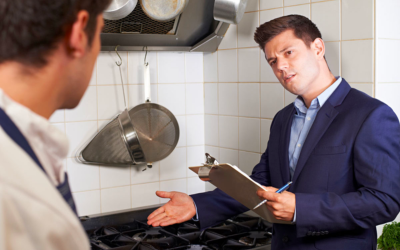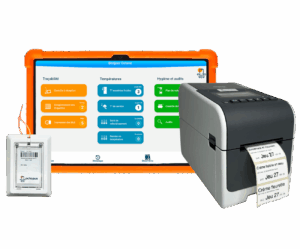What regulations apply to the food service industry? | Octopus HACCP
Summary
- Restaurant regulations? All the obligations!
- Food hygiene regulations in catering
- Regulations linked to safety and accessibility standards in catering
- Mandatory signage in catering establishments
- What are the risks in the event of non-compliance with this mandatory signage?
- How to comply with these various restaurant regulations?
Regulations in the Restaurant Industry? All the Obligations!
Whether you run a traditional restaurant or a collective catering establishment, you must comply with a set of rules and standards governed by French and European regulations. Among other things, you must ensure the food safety of your customers and apply best practices in risk vigilance and sanitary management. This article reviews the regulations in the restaurant industry, related to food hygiene rules, display requirements, and other mandatory regulations in the sector.
For mandatory HACCP records, an application like Octopus HACCP will help you comply with regulations effortlessly. Octopus HACCP supports you daily in navigating the regulations!
Food Hygiene Regulations in the Restaurant Industry
Food hygiene rules are part of the prerequisite programs (PRPs) for restaurants. These are the measures that must be implemented in your catering business. The prerequisites are based on good hygiene practices (GHP) and good manufacturing practices (GMP). These validated frameworks help restaurateurs establish food hygiene rules that comply with regulations and ensure consumer safety.
Sanitary Control Plan
Food hygiene regulations in restaurants are documented in the Sanitary Control Plan (SCP). Implementing an SCP is mandatory in the restaurant industry. It includes all preventive measures and self-checks for critical monitoring points. You can consult a professional in the field to create your SCP.
The SCP covers various chapters, including food hygiene rules and other hygiene standards related to the establishment in general. Setting up an SCP, in line with regulations, defines a broad scope encompassing:
- Premises, equipment, and tools;
- Staff hygiene;
- Adequate supply of potable water;
- Food storage and preservation (hot and cold chain, storage);
- Waste management.
Best hygiene practices are detailed in each of these sections and must be strictly followed to ensure hygiene and sanitary safety in your establishment.
Additionally, beyond implementing an SCP, regulations in traditional or collective catering require that staff handling food products be supervised and have undergone food hygiene training. This mandatory training is also called HACCP training, referencing the risk analysis and management method restaurateurs must implement.
The HACCP Method in Restaurants
The HACCP method fulfills an obligation of results in food safety and hygiene. It is part of the regulations restaurateurs must follow to comply. The HACCP method consists of 7 core principles:
- Hazard analysis;
- Identification of critical control points (CCPs);
- Establishing critical limits;
- Implementing monitoring procedures for CCPs (self-checks);
- Defining corrective actions;
- Verifying the effectiveness of corrective actions;
- Organizing a documentation system ensuring food traceability (receipt, expiration dates, temperature logs for cold storage, cooling monitoring, label creation, cleaning schedule).
These 7 principles are organized into 12 steps to guide professionals in implementing the HACCP system in their establishments.
The HACCP method is mandatory in restaurants and governed by regulations: Regulation (EC) No 852/2004.
How to Navigate These Regulations?
To easily implement HACCP records in your restaurant and comply with regulations, Octopus HACCP supports restaurateurs with turnkey solutions. It’s simple and fast.
Regulations on Safety and Accessibility Standards in Restaurants
Restaurants must comply with safety and accessibility standards like all public establishments (ERP). Regulations in the restaurant industry define safety and hygiene standards for kitchens (wall coverings, ventilation, electrical installations, cooking equipment, emergency exits).
Key accessibility areas include: entrances, reception, circulation paths, restrooms, parking, and signage. Regulations require that all public, including people with reduced mobility, can access these areas. Specific provisions apply depending on whether your restaurant is in a new or old building.
Exceptions for accessibility compliance may apply in cases of:
- Technical impossibility;
- Prohibitive costs;
- Heritage preservation constraints.
Safety standards also require two external access points. Door dimensions are regulated to facilitate emergency evacuation, and exits must remain unobstructed. Additionally, alarm systems (audible or visual), standalone smoke detectors, and operational fire extinguishers are mandatory. These must be regularly inspected, with records kept. Proper signage is required.
Mandatory Displays in Restaurants
Public establishments must display safety instructions in kitchens, including emergency shutdown locations, equipment power plans, and building layouts with cooking equipment locations.
For accessibility, regulations require maintaining an accessibility register available to the public. It must detail the establishment’s accessibility level, available facilities, and planned improvements.
Restaurant regulations also require displaying evacuation plans in all rooms, including building layouts, access routes, and emergency exits. Emergency contact numbers must also be displayed—don’t forget them!
What Are the Risks of Non-Compliance?
Category 1 to 4 establishments must provide a compliance certificate issued by an accredited inspector. For category 5 establishments, a simple self-declaration suffices.
Non-compliance with safety and accessibility standards may result in administrative sanctions, including forced closure until corrections are made.
Restaurateurs also face significant fines, loss of subsidies, and penalties ranging from €1,500 to over €200,000 depending on the violation.
How to Comply with These Regulations?
We recommend consulting professionals, as restaurant regulations can be complex. Between outcome-based and means-based obligations, experts like HACCP trainers, trade unions, Chambers of Commerce, and Octopus HACCP can clarify requirements.




